Avoidable Contact: The Grand National Problem.

Originally published in Speed:Sport:Life April, 2010 — JB
Imagine that you’re an alien. Not an undocumented immigrant, mind you, but a genuine, green-tentacle-and-glass-helmet monstrosity of a visitor from beyond the stars. While your fellow aliens examine the defense systems of Earth (not so hot) and the intelligence of the population (somewhat simian), you attempt to reconcile all the written history you can find with the evidence before your massive, bloodshot, singular eye. You are particularly interested in the history and psychology behind the local transportation devices, known as “cars”, “whips”, “hogs”, or “causes for divorce”.
Most of what you’ve learned is pretty common-sense stuff, even for an alien. There’s a problem, however, and you have, after some months of study, come to call it “The Grand National Problem”. You’ve used your indistinguishable-from-magic science to read everything in the vast record-keeping halls of General Motors. You know from the documentation that the vast majority of Buick Regals produced during the Eighties were chrome-laden, velour-lined “Custom” and “Limited” models. It’s as plain as the order codes on all the old Selectric-typed order forms.
Or is it? All those Customs and Limiteds GM supposedly rolled off the lines at, um, Flint? They’re gone. All your spaceship’s sensors can detect on the roads, all the ones you see at the half-ass local old-car shows, are examples of a rather minor production variant: the “Grand National”. In some years, Grand Nationals accounted for under ten percent of Regal production, but in the twenty-first century virtually every roadworthy example of the baroque Buick sports the blown-six logo and the “Darth Vader” paintjob. The regular Regals have been out of circulation so long, your orbital telescopes cannot even pick them out in junkyards. Something’s gone wrong, either with the data or the observations. Was there a G-body genocide? What happened?
Let’s rap about resale for a moment. The popular press is constantly admonishing us to choose Toyotas and Hondas because their residual value is so spectacular. I recently read a particularly odious piece on MSN which offered a “smart cost alternative” to outstanding, popular cars like the Focus and Malibu — no prizes for guessing that these “alternatives” were mostly beige buckets with a tendency to accelerate unexpectedly. In each case, IntelliChoice resale values were the deciding factor in the CamCord/whatever’s favor. Although the five-year residual tide is slowly turning in the favor of cars like the Consumer Reports-approved Ford Fusion, it’s still true that default-choice Japanese-brand cars are still pulling the most money when it’s time to trade in.
Except, of course, when they aren’t. If you want to buy and hold a car for a long time, the data doesn’t support choosing a Camry. A 2005 Camry may be worth a solid buck, and a 1995 Camry may still pry a few grand out of someone’s pocket, but in the long run Japanese cars are worthless, unless they are styled by a German count and closely imitative of a Jaguar E-Type. The vast majority of Japanese cars go straight to the junkyard the moment it would cost real money to fix them. Don’t believe me? Search eBay for that titan of Toyota excellence, the 1990 Lexus LS400. There aren’t any for sale, because there aren’t any on the road.
The car the LS400 was meant to kill, however, can easily be found on eBay. There are plenty of 1990 S-Classes available; ten as of this writing. There’s even a 1990 7-Series Bimmer on the ‘bay, proving that there really is an ass for every seat. I doubt that a 1990 560SEL is any cheaper to run than the equivalent Lexus, so the disparity must be due to something else.
The clue lies in the imaginary alien’s Grand National Problem. The plain-Jane Regals outsold the Grand National, but nobody saves a regular Regal. A normally-aspirated, light-blue Regal has no value beyond providing pleasant transportation. It’s the equivalent of a horse in the nineteenth century, and when it gives real trouble it’s put out of its misery with the same unsentimental dispatch a farmer would use when packing a trusty but lame old horse into the glue van.
A Grand National, on the other hand… that car has emotional value. Nobody dreams of owning a 1983 Regal Custom (well, I do) but plenty of people would like to show up at the midnight drags in a smooth Buick GN. Some of those people weren’t even alive when the car was available in showrooms, but they’re all interested. I wrote about “soul” a while ago and concluded that the soul resides in the owner, not the automobile. Soul is another way to say interest, perhaps. If a vehicle is interesting, it is likely to survive that day of cold cost reckoning and receive the irrational repair it requires. Its uninteresting competitor, meanwhile, will be unceremoniously cut down.
The buyer who preserves these cars is not the same person as the new-car buyer, which is why the LS400 was so popular as in showroom-stock trim and so readily consigned to oblivion two decades later. The hardcore old-car buyer is a traditionalist. He will almost always ignore age in favor of condition, miles on the odometer for real wear, equipment for rarity. He likes cars that produce interest.
The Grand National is a very interesting car, so time and time again owners have preserved GNs while regular Regals went to the junkyards. The net result is that, more than twenty-two years after the last rear-wheel-drive Regal rolled off the line at Pontiac, Michigan, (that’s right, it wasn’t Flint) the relatively uncommon Grand National has become the most common Regal out there. Hell, it might be the most common G-body GM coupe out there. I wouldn’t bet against it.
Can we find the Grand National effect elsewhere? You bet we can. The 1982 Camaro Sport Coupe, a clean little car with a vented nose, complete lack of ground effects, and an utterly gutless Iron Duke four-cylinder engine, outsold the Camaro Z28 by a reasonable margin. Try to find one now. I’ll wait. While you’re at it, see how many Volkswagen GTIs you will find from the early Eighties before you find a base Golf. We can play this game all night. Supra v. Cressida. Fox Mustang v. first-gen Escort. Porsche 911SC v… well, anything from the late Seventies. Vintage Nine Elevens are so durable, and are preserved with such ardor by their fans, that in some cities I see more of them than I see all other cars from that era.
Even on the occasion that one finds a now-rare everyday car from long ago on sale, the market pricing doesn’t match that of the “interesting” cars. When those time-capsule Regal Customs come out of some dead fellow’s garage, they are almost valueless. The Grand National package wasn’t a cheap option in 1987, but it would have been money well spent for anyone who wanted to resell their Buick today.
With all of this in mind, we could come up with some rules to maximize our long-term resale value. Some people really do want to keep their cars twenty or thirty years, and those people would benefit from knowing how to maximize the eBay spiff they’ll get when it’s time to sell. No doubt MSNBC or Edmunds would do a “Top Ten” list, but I’d prefer to boil it down to a single sentence:
Buy a mechanically durable sporting car from a well-respected manufacturer, in the highest-performance variant you can afford.
Simple as that, and you can go back and look in the past for endless examples. Corvettes fetch far more than Caprice Classics, and 944 Turbos are worth twice as much as naturally-aspirated models. (A 944 Turbo S? Even more so.) One sixteen-valve 190E sells for enough to buy five eight-valvers. Pity the poor fool who didn’t pay the relatively minor premium to upgrade his Mustang LX to five-liter power, and smile at the fellow who spent his forty-two grand on a 1995 Lexus GS300 (a $3,000 no-sale on eBay nowadays) instead of a Porsche 968 (fetching an easy twenty grand with a six-speed manual and a clean bill of health.)
Our imaginary aliens, were they to study humanity long enough, might be cheered by the Grand National effect. It suggests that people will still put money and effort down to obtain cars that are worth loving, despite the best efforts of the environmental lobby, the public schools, the coastal elites, and the United States Government to reduce automobile ownership to the status of an embarrassing, expensive inconvenience. I know it cheers me to think of it. The Grand National effect also suggests that the smartest money isn’t always the most “sensible”. That’s good to know as well.
I feel duty-bound, however, to point out something else that our alien friends might notice. There aren’t a lot of recent cars being rolled into garages to sleep their way towards a well-loved future. The Camry SE is no Grand National, but more tragically, the Nineties Regal GS was even less of one. Nor does the upcoming Regal GS strike me as a likely survivor. What’s worth saving? The sad, swollen, slab-sided sport-utility-vehicles that clog the American arteries won’t ever find a home in anyone’s heart. The niche brands that inspired men and women to hold on to them couldn’t hold on themsleves. The high-end cars that aren’t disposable crap also aren’t fixable in a home garage. And, not to coin a phrase, in this business lately, the best seem to lack all conviction, while the worst are full of passionate intensity.
Still, at this past week’s New York Auto Show I saw a car that just might qualify for Grand-National-style preservation. It’s likely to be durable, it’s fixable, it’s ugly but lovable, it’s fast and it looks exciting. It’s also an example of a manufacturer listening to its public and fixing problems instead of ignoring them. The pricing’s ridiculously optimistic but in this era of fifty-grand six-cylinder Japanese sedans perhaps the concept of value doesn’t carry much credence anyway. It’s a keeper, and it is called the 2011 Subaru Impreza STi.

More by Jack Baruth
Latest Car Reviews
Read moreLatest Product Reviews
Read moreRecent Comments
- Redapple2 UAW may have a valid issue. I ve been in plants that were bad. ....and i greatly dislike the UAW. I may need a 3/4 ton pick up. It will be a hecho Ram gas.
- TheMrFreeze So basically no manual transmissions in US cars after 2029.I just raised one finger in the general direction of NHTSB's main office. Guess which finger it is!
- TheMrFreeze Wife drives a Fiat 500 Turbo 5-speed (135hp vs. 160 in the Abarth), it's a lot of fun to drive and hasn't given us any headaches. Maintenance on it is not as bad as you'd think for such a cramped engine compartment...Fiat did put some thought into it in that regard. Back seat is...cramped...but the front is surprisingly roomy for what it is.I honestly wouldn't mind having one myself, but yeah, gotta have a manual trans.
- Bkojote Tesla's in a death spiral right now. The closest analog would be Motorola circa 2007.The formula is the exact same. -Vocal CEO who came in and took credit for the foundation their predecessor while cutting said efforts behind successful projects.-A heavy reliance on price/margin cuts and heavy subsidies to keep existing stock moving. The RAZR became a $99 phone after starting out as a $399 phone, the same way a Model 3 is now a $25k car.-Increasing focus on BS projects over shipping something working and functional to distract shareholders from the failures of current products. Replace "iTunes Phone" (remember that?) with "Cybertruck" and when that's a dud focus on "Java-Linux" the same way they're now focusing "Robotaxis".-Increasingly cut away investment in quality-of-ownership things. Like Motorola, Tesla's cut cut cut away their development, engineering, and support teams. If you ever had the misfortune of using a Motorola Q you're familiar with just how miserable Tesla Autopilot is these days.-Ship less and less completed products as a preview of something new. Time and time again at CES/Trade Shows Motorola was showing half-working 'concept' devices. The Cybertruck was announced 5 years ago yet functionally is missing most of its features- and the ones it has don't work. And I mean basic stuff- the AWD logic is embarrassingly primitive. A lot of Tesla hyperbole focuses on either he's a 4D-chess playing genius visionary or all of Tesla's being propped up by gov't mandates. But the reality is this company hasn't delivered any meaningful product evolution in the better half of this past decade.
- Pig_Iron Stellantis is looking for excuses to close plants. Shawn Fain just gave them one. 🐹


















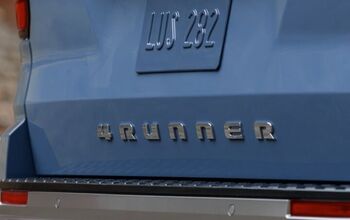




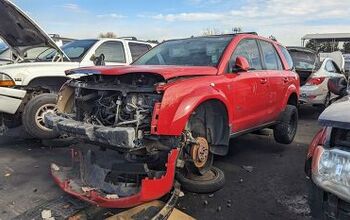






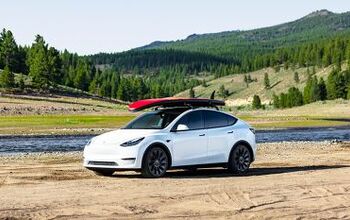


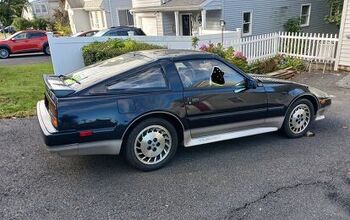
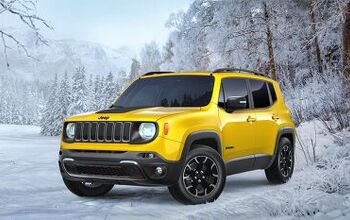
Comments
Join the conversation
"Buy a mechanically durable sporting car from a well-respected manufacturer, in the highest-performance variant you can afford." So how do you explain the big prices that aircooled VW buses and diesel Rabbit pickup trucks command now? These are easily the LEAST sporting vehicles on earth and barely able to outrun tricycles. BTW it is also not true at all that all the non turbo Buick Regals are unloved and disposeable. This car is a mainstay in the lowrider community.
I guess Im 2 years late to the party. But the article didn't convince me. A "search for how many cars on the market" and finding very few Japanese cars doesn't mean Japanese cars are worthless. It could also mean the demand is so high that they get snapped off the market the moment they appear. The only cars that linger on the market are cars that nobody wants. Want proof? Search for how many japanese cars you can find on the market? LOL!! I think you'll need registration data showing there are more carAs in circulation vs carBs in circulation to prove your point ... not how many cars are on the market or how many cars come to antique auto shows ...